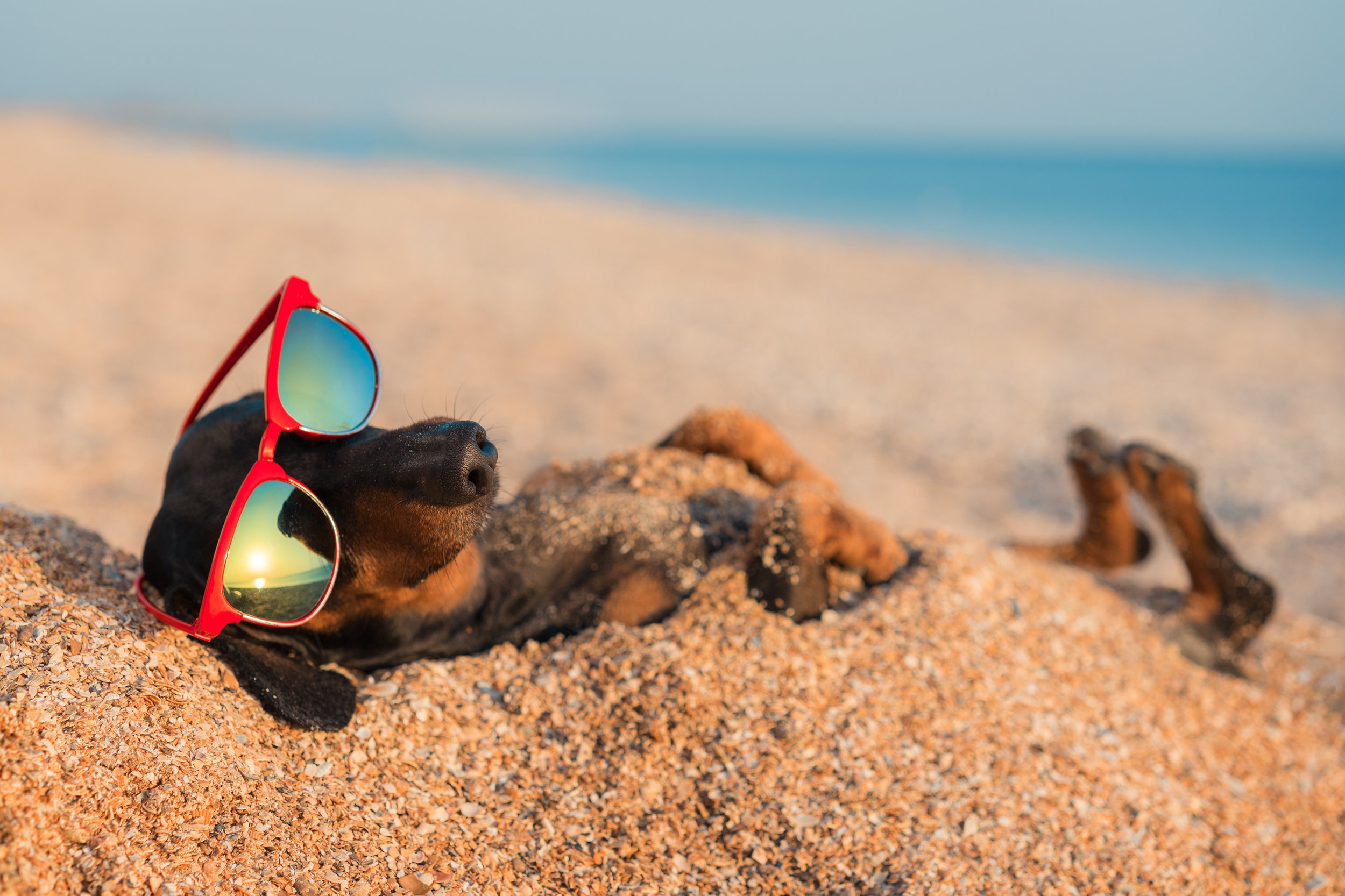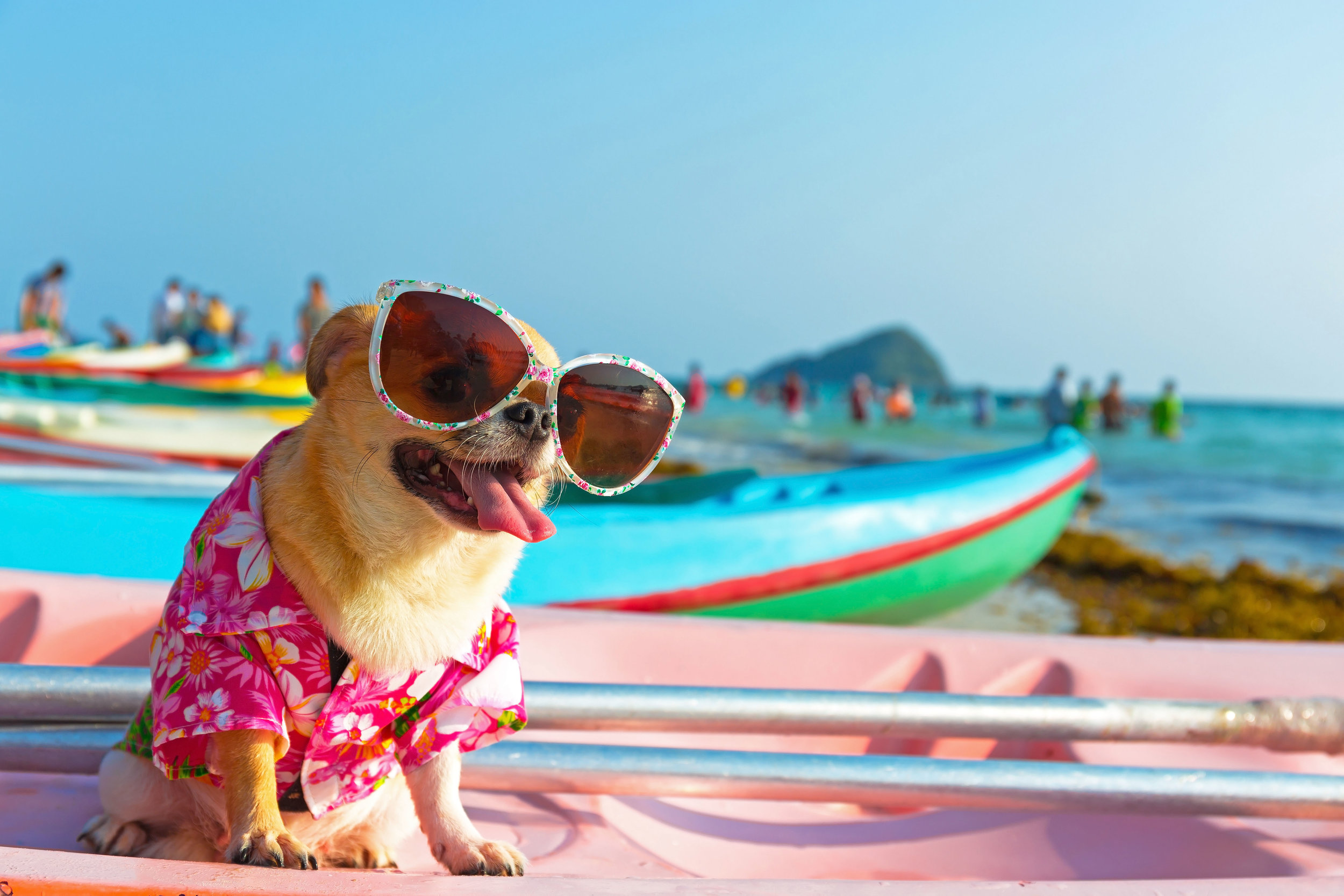Make a Splash With Your Furry Friends
The heat is on and summer is officially here in Central Florida, giving us the perfect opportunity to enjoy some fun in the sun with our dogs. There’s nothing better than letting your pup get their paws wet in the pool, at the beach, or wherever you like to swim and play. But before you dive in headfirst, it’s important to understand the risks and safety considerations involved with letting your dog play in any body of water.
When you have an effective safety protocol at the ready and approach water play time with the proper preparation, you and your dog can have lots of fun while getting in some great exercise time. Keep reading to learn a few simple yet important tips to help keep your dog happy and healthy.
Water Safety for Any Canine Swim Session
While swimming may be fun for lots of dogs, it also comes with a unique set of risks. The following are a few tips to keep in mind before you start doggy paddling.
Teach your dog the basics of swimming
First and foremost: never put your dog in a body of water without proper training and introductions. Contrary to popular belief, not all dogs are born swimmers, and many need at least a few chances to get acclimated to the water before they start swimming in earnest.
If you have a pool at home, start by letting your dog stand on the steps in the shallow end. You should always start off in the shallow end so it’s easy for your dog to get out if they panic or decide they don’t want to swim. Never force your dog to do more than they’re comfortable with.
Additionally, there are many professional dog swim classes available to pet parents who want their dogs to have the best training possible. Our friends at Dip’n Dogs offer swim lessons for beginners, as well as hydrotherapy and fitness classes for dogs of all skill levels.
Whether or not you want to make swimming a regular activity for your dog, it’s a great idea to give them lessons if you have a pool at home. Giving your dog confidence in the water can help save their life in an emergency!
Ensure water conditions are safe
Not all bodies of water are safe for swimming in. Lakes and ponds, in particular, can be home to deadly bacteria that can quickly cause your dog to fall ill or worse. Strong ocean tides can easily overwhelm even the most confident of swimmers, and consuming an excessive amount of saltwater can cause serious health issues in dogs. Always double check the water conditions before you set your play date.
Never leave your dog unattended
No matter how experienced your dog is with swimming, don’t leave them unattended while they play. Make sure you’re close by and free from distractions as you monitor your dog’s behavior and actions in the water. If possible, swim by their side–it’s a great bonding activity and also ensures you’re nearby to help if the need arises.
Plan for breaks
It can be easy to lose track of time when we’re having fun, but it’s important to let your dog take regular breaks during play time. They’ll need to be able to comfortably relieve themselves from time to time. Additionally, swimming expends more energy than the usual activities of running and walking, so they’ll probably get tired more quickly than you expect.
Always have fresh water nearby
Don’t drink the pool water (or the ocean water, or the river water)! After expending all that energy, your dog is going to need to refuel and refresh with a drink of water. Your dog may be tempted to drink the water around them when they’re thirsty, but of course, that’s not healthy. Be sure to set out a bowl of fresh, cool water in an easily accessible area for your dog to rehydrate.
Teach your dog how to enter and exit the water
Knowing how to safely enter and exit the pool, ocean, or lake is just as important as knowing how to swim. In a pool, you should familiarize your dog with using the stairs. At the beach, make sure there are no rocky drops past the shoreline, and ensure the surf isn’t too rough before you allow your dog to make their way into the water. In other bodies of water, like rivers and lakes, make sure your dog has a slope or a sturdy foothold where they can easily exit as needed.
Always clean up afterwards
Don’t let that water sit on your dog’s skin and fur after your swim session is over. Chlorine in pools can irritate and dry the skin and fur. Natural bodies of water can have toxins and microorganisms that want to cling to your dog. Always be sure to rinse and thoroughly wash and dry your dog after you’re done swimming. Use a gentle shampoo and be sure to clean around ears and folds!
Why Swimming is a Great Activity for Your Dog
When you’re safe and prepared, swimming is an excellent physical activity for dogs of all ages. It’s truly a full-body workout, more than playing fetch or jogging, and is great for the respiratory and circulatory systems. It’s a great exercise option for elderly and overweight dogs since it’s low impact and offers some additional buoyancy. Another benefit for elderly dogs is that cool water can be therapeutic on sore, arthritic joints. Overall, it’s one of our favorite ways to give our dogs some quality play time, and it’s even more fun when we can enjoy it together!
Keep High-Value Treats on Hand for Swim Training
Getting your dog comfortable and confident in their swimming abilities can take some time. Be sure to offer your dog some high-value treats for being brave and learning new skills! Our all-natural chicken crisps are the perfect reward for a hardworking dog. Visit our online store or stop by our booth at the Lake Mary, Winter Park, and Maitland Farmers Markets almost every weekend!





